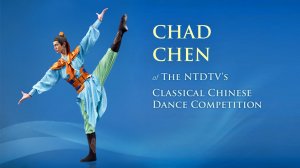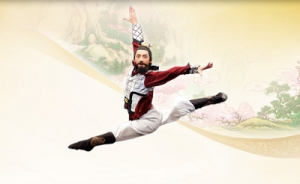Bearing
Bearing is the translation of a specific Chinese term (yun) that can best be described as a particular inner spirit. It is formed by a combination of something resembling cultural DNA or an ethnic flavor in Chinese people’s bones, together with the heritage of 5,000 years of Chinese civilization. Bearing emphasizes internal spirit, breath, intent, personal aura, and deep emotional expression. In essence, the spirit leads form, so that form is imbued with spirit.
The bearing of classical Chinese dance blends many elements. For example, “three round movements” form the foundation for the direction of movement, while the waist serves as an axis for the lifting and sinking of the torso with breath, the protruding and leaning back of the torso on a diagonal axis, the rounding in and rounding out of the chest, the movement of the ribs, and so on. These basic elements endow classical Chinese dance with incredible expressivity, and vast creative potential. It can nimbly portray movements from daily life, as well as profoundly express the innermost transformation of one’s emotional state.
January 21, 2011



